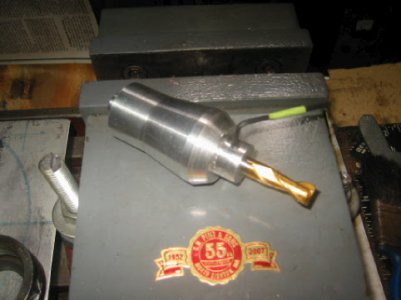My mill has an R8 spindle. I've just been using collets to hold my end mills. It's a smaller mill - similar to a G3102. I think the benefit is that I get a little more Z axis space that way (not that I've ever needed it so far). Is there an advantage or reason to use an endmill holder like http://www.use-enco.com/CGI/INSRIT?PMAKA=KE210-0104 instead? I have had an endmill slip out of it's collet a little causing me to cut too deep (it got 'longer' so milling down until I hit the stop caused me to go too deep ruining the work). This only happened once & I could have just not snugged it enough that one time? Or that might be a common drawback of using collets to hold end mills in the spindle. Don't know so that's why I'm asking
I had the same thing happen with an end mill pulling down out of a collet. It was a 1/2" roughing end mill. I believe it was the vibration from running a larger cutter with a greater depth of cut that caused the end mill to slip.
Walt


